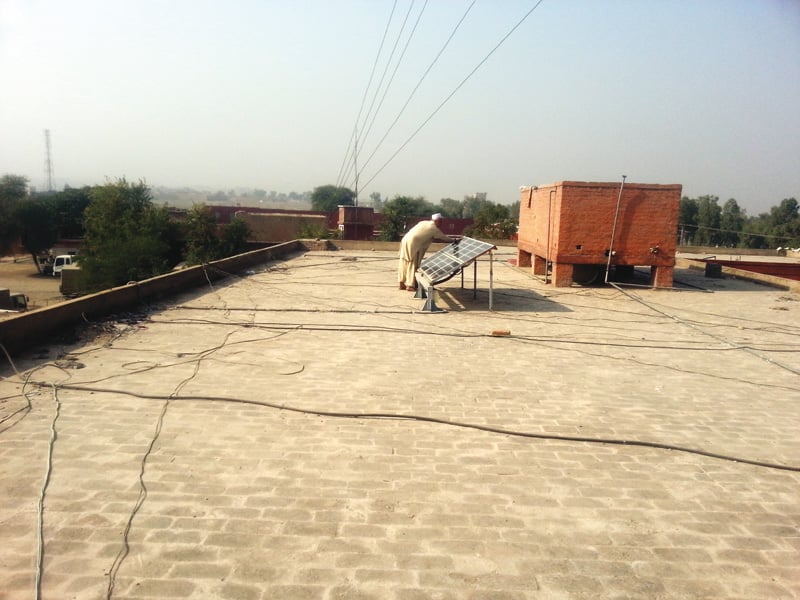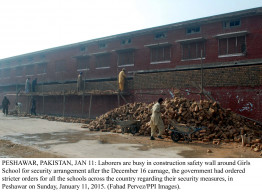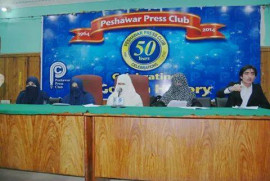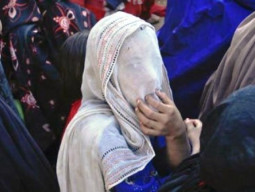
The modes of communication have come a long way since the late 1800’s, when Marconi revolutionised communication technology and sent the first wave across the Atlantic. However, in the Federally Administered Tribal Areas (Fata) and across Khyber-Pakhtunkhwa, radio remains a bog-standard means of communication and a source of information for a large chunk of the population. Recent research is scarce, nonetheless the region’s officials believe around 80% of the people in the tribal belt still depend on radio. A number which is astonishing, yet, for the want of alternative data, almost believable.
On again, off again
And so the signals of Radio Khyber emanate from a two-room studio within the dusty political compound of Jamrud. The nearby rooms are now an abode for the levies force. When the radio was shut down (temporarily) two years ago, the government said it was due to a lack of resources since it was a donor-funded project.
Radio stations in Fata first appeared in 2004, when the government set up the first one in Razmak, North Waziristan, followed by one in Wana, South Waziristan—areas where trouble in the guise of militancy was brewing.
Aneeq Ahmad Khan is a senior broadcast engineer who has been associated with government’s project since its inception. Aneeq went through a unique form of transference as the radio stations which he helped create went through volatile stages of transformation. Aneeq recalls when he helped put up antennas in those areas with his own hands. “It was difficult,” he says, recalling the days when militants in South Waziristan first blew up the main antenna and then finally ransacked the entire radio station.

Signals of Radio Khyber emanate from a two-room studio in Jamrud. PHOTOS: IFTIKHAR FIRDOUS/EXPRESS
Aneeq, then turned to Khyber Radio, and when that was shut down in 2013 he tried opening up a shop without much success. His financial woes added to the feel of frustration which consumed the broadcast engineer as he remained unable to do what he did best—run a radio station.
He says, “The reopening [of Radio Khyber] is one of the best things that could have happened in recent times.”
Countering hyperbole
Even in the wake of the Army Public School Peshawar attack and stringent media regulations (which do not apply to Fata), there are traces that militant radios are still functional in the tribal belt. The massive military onslaught in several agencies means the frequency with which the militants broadcast has not been stable but subversive narratives do exist, crackling through electromagnetic waves. A fact acknowledged by Fata’s Secretary Security Shakeel Qadir.
“The main purpose is to deny militants and vanquish their ideological space,” says Qadir.
The radio is the perfect way of establishing the writ of the state: “We are trying to block out the ‘militant waves’,” he says, “But it hasn’t been easy”. After all, the terrorists now use mobile transmitters which they connect, sitting in a vehicle in any isolated part, explains another official. “It is a mobile propaganda machine,” he points to some rotund transmitters in one corner of the room where he sits. “It works as far as 15 kilometres, enough to terrify people, even if the broadcast is recorded.”
Taking waves, making waves
The FATA Secretariat aims at establishing a radio station for each of the seven quasi-districts—agencies—of the tribal areas. The initial draft of the policy which has been approved by the governor is in its final stages where modalities are being framed. Radio Khyber, however, is a test run; a check to see if continuing with the project is worth the airtime.
The risks involved in airing content in tribal areas can be life threatening. There are several constraints—the social, tribal and, above all, anarchic dimensions of a warzone.
Officials associated with the program say they only have verbal instructions about what goes on air. For now, the transmission lasts 6 hours from 8am to 11am and 1pm to 4pm; all in the comforting light of day. No news is broadcast; no calls can be taken live. Security threats as well as social constraints make this a necessary prerequisite.
“We usually change the names of women who call us,” says an official associated with the plan to light up Fata’s airwaves, where the content will always be on the lighter side of dark.
Published in The Express Tribune, January 26th, 2015.






















1714024018-0/ModiLara-(1)1714024018-0-270x192.webp)
















COMMENTS
Comments are moderated and generally will be posted if they are on-topic and not abusive.
For more information, please see our Comments FAQ